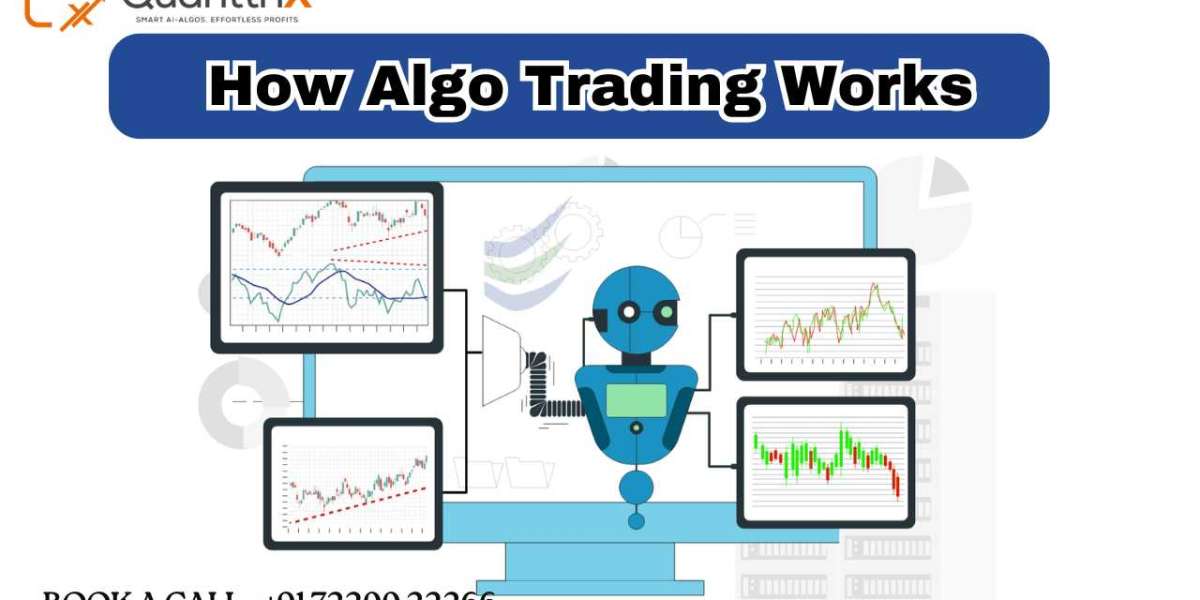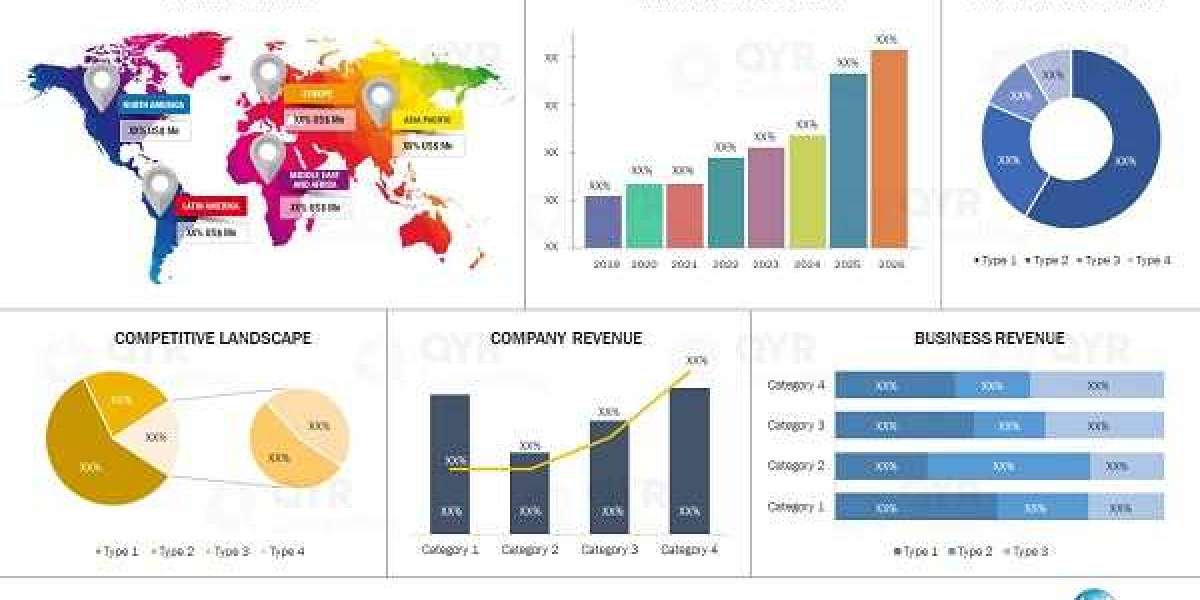How Algo Trading Works: A Simple Guide for Everyone
In the world of modern finance, many people are intrigued by the term "Algo Trading" or "Algorithmic Trading." But what exactly is it? How does it work, and why has it become so popular in recent years? Whether you are an investor, a curious trader, or just someone interested in the stock market, this article will walk you through everything you need to know about Algo Trading and its growing presence, particularly in India.
Algo trading in India is gaining a lot of traction, and knowing how it works can help you decide if it's the right fit for your trading style. But first, let’s break it down in simple terms.
Introduction to Algo Trading
Imagine you’re trying to buy a ticket for a concert. Instead of manually searching for the best deal, you set up a bot that automatically searches, compares prices, and purchases the ticket as soon as it finds the best price. That's the essence of Algo Trading – using computers to automatically execute trades based on a set of predefined conditions, without human intervention.
While this may sound like a concept from a futuristic world, it’s very much a part of the present, especially in the world of stock markets.
Learn how algo trading works and explore the best software for trading in India. A beginner’s guide to algo trading in India and its growing impact on financial markets.
What is Algorithmic Trading?
Algorithmic trading, often referred to as Algo Trading, is the process of using computer algorithms (a set of rules or instructions) to execute trades on financial markets. These algorithms can assess market conditions, analyze data, and place orders at speeds much faster than any human could achieve. The goal is to make trades at the right time, optimizing profits and minimizing risk.
Key Features of Algo Trading:
- Automation: Trades are executed without human intervention.
- Speed: Algorithms can analyze data and execute orders in fractions of a second.
- Accuracy: Algorithms follow predefined instructions, which means there is less room for human error.
- Backtesting: Strategies can be tested on historical data before being used in real-time.
How Does Algo Trading Work?
Let’s break it down. Here's how algo trading works step by step:
- Developing a Strategy: Traders or quants (quantitative analysts) design an algorithm based on certain rules such as price, timing, or volume.
- Backtesting: Before using the algorithm in real markets, traders test it against historical data to see how it would have performed.
- Execution: Once the strategy is refined, the algorithm is programmed to place trades based on real-time market data.
- Monitoring: The algorithm continues to monitor the market and adjust trades as needed without human intervention.
In simple terms, it's like having a personal assistant who is constantly checking the market and making trades on your behalf, according to a set of instructions you’ve already given.
Key Advantages of Algo Trading
Algo trading has become a popular choice among investors for several reasons:
- Speed: Algorithms can execute trades at lightning-fast speeds, giving traders an edge in highly competitive markets.
- Reduced Human Error: Since the trading is automated, the chance of human errors such as emotional decisions or mistakes in execution is reduced.
- Efficiency: Algo trading can analyze vast amounts of data in real-time, which would be impossible for a human to do manually.
- Cost-Effective: By automating trades, the need for constant monitoring is reduced, potentially lowering operational costs.
The Role of Algorithms in Trading
In algo trading in India, algorithms play the crucial role of sifting through immense amounts of market data to identify opportunities. These algorithms can be based on various factors, such as:
- Price Trends: Algorithms monitor stock prices and buy or sell when certain price targets are reached.
- Market Sentiment: Algorithms analyze news, social media, and financial reports to gauge market sentiment.
- Statistical Models: These models use mathematical formulas to predict future price movements based on historical data.
By relying on these algorithms, traders can make data-driven decisions rather than relying on intuition or guesswork.
Popular Strategies in Algo Trading
Some of the most commonly used strategies in algo trading include:
- Trend Following: This strategy involves following market trends. If an asset is rising in value, the algorithm buys, and if it is falling, it sells.
- Arbitrage: This strategy looks for price differences between two or more markets and takes advantage of those discrepancies.
- Mean Reversion: This strategy is based on the idea that prices will revert to their historical average over time.
- Market Making: This strategy involves placing buy and sell orders in the market to profit from the bid-ask spread.
Each strategy has its strengths and is chosen based on the trader’s risk appetite and market conditions.
Algo Trading in India: A Growing Trend
In recent years, algo trading in India has gained popularity among retail traders, institutional investors, and even financial institutions. With India's increasing access to technology and high-speed internet, more traders are adopting algorithmic trading to stay competitive.
Several Indian stock exchanges, such as the National Stock Exchange (NSE), provide infrastructure for algo trading, and there are platforms offering trading software specifically designed for the Indian market. This has made it more accessible to a wider audience, from beginner traders to seasoned professionals.
Choosing the Best Software for Trading in India
When it comes to algo trading in India, choosing the right software is crucial. Here are some key factors to consider:
- User-Friendliness: The best software for trading should be easy to use, even for beginners.
- Customization: Look for software that allows you to design and implement your own trading strategies.
- Speed and Efficiency: Fast execution is critical in algo trading. Choose software with low latency for quicker trades.
- Backtesting Capabilities: Ensure the software allows you to test strategies using historical data.
Some of the best software options for trading in India include Quanttrix, Upstox, and Interactive Brokers. These platforms offer powerful tools for algo trading, along with low commissions and a user-friendly interface.
How to Get Started with Algo Trading
If you’re new to algo trading in India, here’s how you can get started:
- Learn the Basics: Familiarize yourself with how algo trading works. You can read articles, attend webinars, or take online courses.
- Select a Broker: Choose a broker that supports algo trading and offers low transaction fees.
- Choose Trading Software: Pick the best software for trading based on your needs and preferences.
- Develop a Strategy: Research and design a trading strategy based on your goals.
- Test Your Strategy: Always backtest your strategy on historical data before using real money.
- Start Trading: Once you’re confident in your strategy, begin trading with small amounts.
Risks Involved in Algo Trading
While algo trading offers many advantages, it also comes with its own set of risks:
- Technical Failures: A malfunction in the algorithm could lead to significant losses.
- Market Volatility: Algorithms are designed to respond to market conditions, but they may not always handle extreme volatility well.
- Over-Optimization: Excessively fine-tuning a strategy based on past data may lead to overfitting, where the algorithm performs well in backtesting but poorly in real trading.
Legal and Regulatory Aspects of Algo Trading
In India, algo trading is regulated by the Securities and Exchange Board of India (SEBI). They have laid out guidelines to ensure fair practices in the market. Traders must follow specific rules regarding order placement, market surveillance, and risk management to prevent market manipulation.
Common Myths about Algo Trading
There are several misconceptions about algo trading that can discourage new traders:
- Myth 1: "You need to be a programming expert to do algo trading."
- Myth 2: "Algo trading is only for institutional investors."
- Myth 3: "It guarantees profits."
In reality, while programming skills can be helpful, many platforms offer easy-to-use tools for algo trading. Plus, anyone with a basic understanding of trading can try it.
Future of Algo Trading in India
The future of algo trading in India looks bright. With technological advancements, the rise of artificial intelligence (AI), and increasing access to high-speed internet, more retail traders are expected to dive into the world of algorithmic trading. The Indian market’s evolving regulatory landscape will also play a key role in shaping the future of this trading method.
Conclusion: Should You Try Algo Trading?
Algo trading is a powerful tool that can help traders make more efficient and informed decisions. Whether you're looking to automate your trades, reduce human errors, or maximize your market opportunities, algo trading might be worth exploring.
But remember, as with any trading method, it’s important to fully understand how it works and to carefully choose the best software for trading in India before diving in.
FAQs
What is the artificial intelligence for trading in India?
The best software for algo trading in India includes platforms like Quanttrix, Upstox, and Interactive Brokers, which offer low-cost trading with excellent backtesting tools.
Is algo trading legal in India?
Yes, algo trading is legal in India and is regulated by the Securities and Exchange Board of India (SEBI), which has laid out guidelines for fair trading practices.
Can beginners use algo trading?
Yes, beginners can use algo trading. Many platforms provide easy-to-use interfaces that don’t require advanced programming knowledge.
How much money do I need to start with algo trading?
The amount of money required to start algo trading varies depending on the platform and the market. However, it’s recommended to start small and gradually increase your investment.
What risks are associated with algo trading?
Some risks associated with algo trading include technical failures, over-optimization of strategies, and unforeseen market volatility, which may lead to financial losses.











